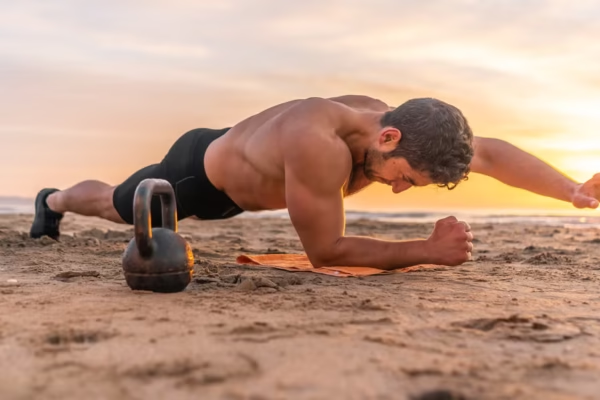You’ve been hitting the gym for a few months, maybe even a year. The newbie gains are behind you, and you’re no longer intimidated by the weight rack. But now, you’re noticing progress has slowed. That initial rush of getting stronger every week? It’s fading. Welcome to the intermediate fitness stage—a point where your body demands smarter, more strategic workouts to keep evolving. This article is your guide to breaking through plateaus, refining your gym routine, and building a physique that turns heads. Drawing from my own experience as a fitness enthusiast who’s navigated this exact phase, I’ll share practical tips, science-backed strategies, and a touch of humor to keep you motivated.
What Defines an Intermediate Fitness Level?
An intermediate fitness level typically describes someone who’s been training consistently for 3–12 months. You’ve mastered basic exercises like squats and push-ups, built a decent strength foundation, and likely have a routine you’re comfortable with. But comfort can be the enemy of progress. At this stage, your body adapts to your workouts, and without new challenges, you’ll stall.
Signs You’re an Intermediate
You’re probably an intermediate if you’re nodding along to these: you can lift heavier than when you started, recover faster, and feel confident in the gym. But you’re not quite ready for advanced moves like snatches or marathon-level endurance. The goal now is to push your limits strategically.
Why Progression Matters
Your body is a master adapter. Do the same workout for too long, and it’ll stop responding. Progression—through increased weight, volume, or intensity—is the key to unlocking new gains. I remember hitting my first plateau after six months of lifting. I was stuck benching the same weight, frustrated. Then I learned about progressive overload, and everything changed. Let’s dive into how you can make that happen.
The Power of Progressive Overload
Progressive overload means gradually increasing the stress on your muscles. This could be lifting heavier, adding reps, or tweaking rest times. The trick is to do it without burning out or risking injury. Start small—add 5 pounds to your squat or an extra set to your routine.
Crafting an Intermediate Workout Plan
An effective intermediate workout plan balances strength, cardio, and recovery. You’re not just throwing weights around anymore; you’re building a system. Below is a sample 4-day plan I used to break my own plateau, inspired by research and trial-and-error. It hits major muscle groups twice a week and incorporates variety to keep things fresh.
Sample 4-Day Intermediate Workout Plan
Here’s a structured plan to get you started. Adjust weights and reps based on your current level, but aim to challenge yourself.
| Day | Focus | Exercises | Sets x Reps | Rest |
|---|---|---|---|---|
| Day 1 | Upper Body (Push) | Barbell Bench Press, Overhead Press, Tricep Dips | 3–5 x 6–8 | 2–3 min |
| Day 2 | Lower Body | Barbell Squats, Romanian Deadlifts, Calf Raises | 3–5 x 6–8 | 2–3 min |
| Day 3 | Rest or Active Recovery | Light Yoga or Walking | – | – |
| Day 4 | Upper Body (Pull) | Pull-Ups, Bent-Over Rows, Bicep Curls | 3–5 x 6–8 | 2–3 min |
Day 1: Upper Body (Push)
Focus on chest, shoulders, and triceps with compound movements. The bench press is your bread and butter here, but don’t sleep on dips—they’re a game-changer for tricep strength. I once ignored dips, thinking they were “too hard.” Big mistake. Adding them boosted my pressing power significantly.
Day 2: Lower Body
Squats and deadlifts are non-negotiable for building leg strength and overall power. Calf raises add definition—because nobody wants chicken legs. Pro tip: focus on form over ego. I learned this the hard way after tweaking my back from sloppy deadlifts.
Day 3: Rest or Active Recovery
Rest doesn’t mean Netflix all day (though I’m guilty of that). Active recovery like yoga or a brisk walk keeps your body moving without overtaxing it. A 20-minute yoga session once saved me from crippling soreness after leg day.
Day 4: Upper Body (Pull)
Pull-ups and rows target your back and biceps, crucial for a balanced physique. If pull-ups are tough, use resistance bands for assistance. I started with bands and felt like a superhero when I finally did my first unassisted pull-up.
Key Strategies for Intermediate Success
Now that you have a plan, let’s talk strategies to maximize results. These are the game-changers that helped me go from “decently fit” to “actually strong.”
Incorporate Compound Movements
Compound exercises like squats, deadlifts, and bench presses work multiple muscle groups, giving you more bang for your buck. They’re efficient and mimic real-world movements, like lifting groceries or chasing your dog. Prioritize these over isolation exercises like bicep curls.
Master Progressive Overload Techniques
Here are some ways to keep progressing:
- Increase Weight: Add 2.5–5 pounds every 1–2 weeks if form allows.
- Add Reps or Sets: Bump up from 8 to 10 reps or add a fourth set.
- Reduce Rest Time: Cut rest by 15 seconds to increase intensity.
- Vary Tempo: Slow down the eccentric (lowering) phase for more muscle tension.
Mix in Cardio and HIIT
Cardio isn’t just for weight loss—it boosts endurance and heart health. Intermediate-level HIIT (High-Intensity Interval Training) is perfect for efficiency. Try sprinting for 30 seconds, then walking for 60 seconds, repeating for 15 minutes. I started HIIT on a treadmill and was shocked at how quickly my stamina improved.
Prioritize Recovery
Recovery is where the magic happens. Muscles grow when you rest, not when you lift. Aim for 7–9 hours of sleep, hydrate like it’s your job, and consider foam rolling to ease tightness. I once skipped recovery for weeks and felt like a rusty robot—don’t make that mistake.
Nutrition for Intermediate Gains
You can’t out-train a bad diet. Nutrition is the fuel for your workouts and recovery. Here’s how to dial it in.
Macronutrient Breakdown
- Protein: Aim for 0.7–1g per pound of body weight to support muscle repair. Chicken, eggs, and protein shakes are my go-to’s.
- Carbs: Fuel your workouts with complex carbs like oats, sweet potatoes, or rice. I aim for 2–3g per pound of body weight on training days.
- Fats: Healthy fats like avocados and nuts support hormones. Keep them at 20–30% of your calories.
Meal Timing Tips
Eat a carb-heavy meal 2–3 hours before training for energy. Post-workout, have protein and carbs within 30 minutes to kickstart recovery. I swear by a post-gym smoothie with whey protein and a banana—it’s like a reward that actually helps.
Pros and Cons of Intermediate Training
Pros
- Faster Results: With strategic planning, you’ll see strength and aesthetic improvements.
- More Variety: You can experiment with advanced techniques like supersets or HIIT.
- Increased Confidence: Mastering new exercises feels empowering.
Cons
- Risk of Overtraining: Pushing too hard without rest can lead to burnout or injury.
- Plateau Risk: Without variety, progress can stall.
- Time Commitment: Intermediate plans often require 4–5 gym days.
Comparison: Beginner vs. Intermediate Workouts
| Aspect | Beginner | Intermediate |
|---|---|---|
| Frequency | 2–3 days/week | 4–5 days/week |
| Exercise Focus | Basic movements (e.g., bodyweight) | Compound + isolation exercises |
| Intensity | Low to moderate | Moderate to high |
| Progression | Linear (add weight weekly) | Varied (weight, reps, tempo) |
| Recovery | Minimal focus | Structured rest and active recovery |
This table highlights why intermediates need more structure. Beginners can get away with simpler routines, but you’re past that now.
Tools and Resources for Intermediate Fitness
To level up, you’ll need the right gear and guidance. Here’s what I recommend:
- Fitness Trackers: Devices like Fitbit or Apple Watch track reps, heart rate, and recovery. I use mine to ensure I’m hitting my zones during HIIT.
- Workout Apps: Apps like Strong or MyFitnessPal log workouts and nutrition. They’re like a personal trainer in your pocket.
- Gym Equipment: Invest in a good pair of lifting shoes for stability. I noticed a huge difference in my squats after getting proper footwear.
For in-person guidance, check out local gyms like Aura Leisure for classes or personal trainers. Online, platforms like Orangetheory offer virtual sessions.
People Also Ask (PAA)
How long should an intermediate workout be?
Most intermediate workouts last 60–90 minutes, including warm-up and cool-down. This gives enough time to hit 4–6 exercises with proper rest. Adjust based on your schedule, but don’t rush—quality trumps speed.
How do I know if I’m an intermediate in the gym?
If you’ve been training consistently for 3–6 months, can perform basic exercises with good form, and notice progress slowing, you’re likely an intermediate. You’re ready for more complex routines and higher intensity.
When should I move from beginner to intermediate?
Transition when workouts feel easy, you’re recovering well, and progress stalls. This usually happens after 3–6 months of consistent training. Start incorporating progressive overload and variety.
What are the best exercises for intermediate fitness?
Compound movements like squats, deadlifts, bench presses, and pull-ups are ideal. They target multiple muscles and build strength efficiently. Add HIIT for cardio and mobility work for flexibility.
FAQ Section
How often should I change my intermediate workout routine?
Switch things up every 4–6 weeks to avoid plateaus. Small tweaks—like adding reps or changing exercises—keep your body challenged without starting from scratch.
Can I do intermediate workouts at home?
Yes, with minimal equipment like dumbbells and resistance bands. Focus on bodyweight exercises like push-ups or use household items for resistance. Apps like Endomondo offer home-friendly plans.
How important is nutrition for intermediate fitness?
Nutrition is critical—about 70% of your results come from what you eat. Prioritize protein for muscle repair, carbs for energy, and fats for hormones. Consult a nutritionist for personalized advice.
Should I use supplements as an intermediate?
Supplements like whey protein or creatine can help, but they’re not magic. Focus on whole foods first. I use creatine for strength gains, but only after nailing my diet.
How do I avoid injury as an intermediate?
Warm up properly, maintain good form, and don’t skip rest days. Record yourself lifting to check technique—I caught bad squat form this way and saved my knees.
Conclusion: Your Path to Fitness Mastery
Stepping into the intermediate fitness stage is like graduating from high school to college—it’s exciting, challenging, and a bit daunting. But with a solid plan, progressive overload, and a focus on recovery and nutrition, you’ll break through plateaus and build a body you’re proud of. My own journey from a plateaued beginner to a confident intermediate taught me patience and strategy are everything. Start with the sample plan, tweak it to your goals, and keep learning. Your next level is waiting—go crush it.
For more guidance, explore resources like Health.com for science-backed tips or join a community like Aura Leisure for in-person support. Share your progress in the comments—I’d love to hear how you’re leveling up!






